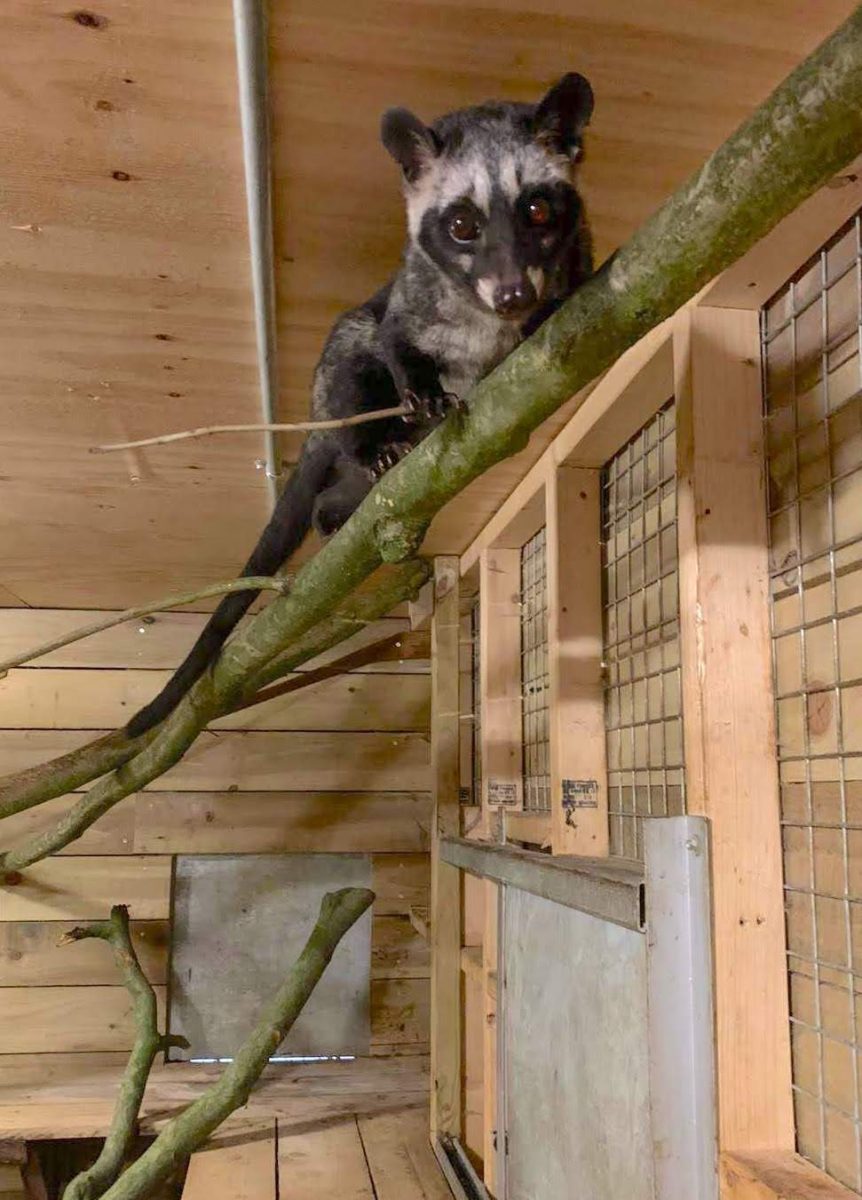Factfile
Where they live
South and Southeast Asia
Habitat
Tropical jungles and rainforests
Size
43 cm - 71 cm
Weight
1.4 kg - 4.5 kg
Lifespan
15 - 20 years
Did you know...
- The Asian palm civet is also known as the common palm civet and the Toddy Cat is areas where the Asian palm civet is natively found.
- Asian Palm Civets feed only at night, and it is believed that its fear of predators during daytime is the principal reason for its nocturnal attitudes.
- Coffee seeds make their way (in whole) through the digestive path of the civet, then it is collected by people to be used in coffee, and this is no ordinary coffee. This coffee is in high-demand for its unique flavour and is very expensive.
More about Asian palm civets...
The Asian palm civet is found throughout much of Asia and (despite their cat-like appearance) are not felines at all but are in fact more closely related to other small carnivores – including weasels and mongooses.
Unlike other civet species, the tail of the Asian palm civet does not have rings, but the face of this species is banded like that of a raccoon.
The Asian palm civet is easily recognisable by its dark, coarse hair and large eyes.
The Asian palm civet is a carnivorous animal, and like other species of civet, it survives on a meat-based diet, supplemented by the odd plant or fruit. Small animals such as rodents, lizards, snakes and frogs make up the majority of the Asian palm civet’s diet, along with insects and other small creatures scuttling through the under-growth. Asian palm civets are also known to eat the fruits and flowers of palms, mangos and coffee in their natural habitats.
Today, the Asian palm civet is under threat from deforestation and therefore drastic loss of much of its natural habitat. The main reason for such extensive deforestation in the area is either for logging or to clear the land to make way for palm oil plantations.











